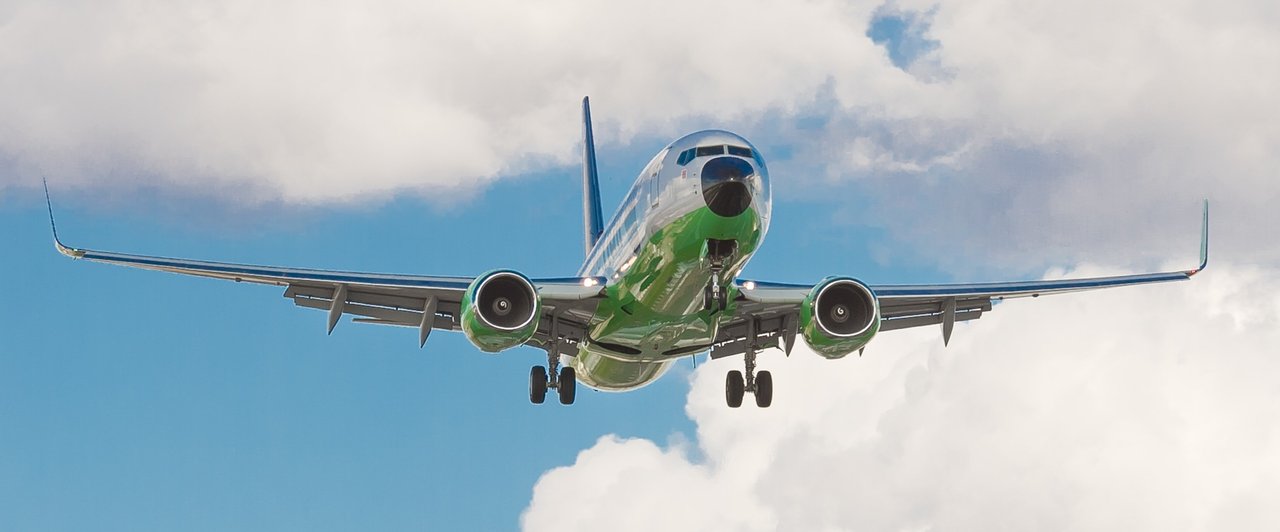The long haul to zero emissions aviation
Aviation remains one of the hardest sectors to decarbonise. Nothing propels a commercial aircraft as efficiently and economically as fossil fuel.
Before the pandemic grounded the world’s passenger fleet, aviation accounted for about 2.4 per cent of global emissions. Including non-carbon effects such as nitrogen oxide and contrails — icy vapour trails left in an aircraft’s wake — aviation’s environmental impact rises to about 3.5 per cent, according to Manchester Metropolitan University’s Centre for Aviation, Transport and the Environment.
As other sectors move more quickly to cut their carbon impact, aviation’s share will increase.
Although CO2 emissions per passenger flight have fallen 54 per cent since 1990 thanks to better engines and improved operations, the total volume has jumped 34 per cent over the past five years because of rising air traffic.
By 2050, we're expecting 10 billion passengers to fly 20 trillion kilometres. That's a lot of carbon.
There are alternatives being developed. Electric aviation has caught lots of people's imagination, but the batteries are still too heavy.
Another potential option is biofuel, made from feedstocks ranging from plants, to used cooking oil and municipal and household waste.
Like all sustainable fuels, it’s expensive — up to two, to four times the cost of standard jet fuel.
Hit by the collapse in global air travel during the Covid-19 pandemic, no carrier wants to pay more for fuel, which has at times accounted for up to 30 per cent of airline operating costs, depending on oil prices.
Environmental groups are also worried by differing definitions of what can be classified as a sustainable feedstock. Ultimately, some that are currently acceptable may prove unsustainable. This might be because there is not enough to meet competing demand from different sectors, as with used cooking oil. Or it could be because unintended consequences are eventually recognised.
For example, the residue generated from processing palm oil for the food industry — known as palm fatty acid distillate — is used by Finland’s Neste and France’s Total to create biofuels. While PFAD may be a residue, rather than a primary product of cultivation, its use has been criticised for enhancing the commercial viability of palm oil, a crop that has contributed to deforestation.
Another solution may lie in synthetic fuel — artificially created to replicate kerosene, but this is not straightforward either. The creation of so-called power-to-liquid or e-fuels requires huge amounts of green electricity, which makes them very expensive — and massive investment is needed in both renewable energy and fuel production to cut the cost. Synthetic fuels also emit carbon, although only what has been taken from the atmosphere.
“The cost of these e-fuels in the 2030s could be as low as today’s low-cost biofuels,” said Daniel Riefer, aviation partner at consultants McKinsey. “But you cannot scale up right away.”
E-fuels have one big advantage. Like clean biofuel, they can be dropped into the tanks of today’s aircraft and use existing fuel infrastructure. “The benefit of sustainable aviation fuel is that we don’t have to change very much,” said Russ Dunn, chief technology officer at GKN Aerospace.
GKN is also working on hydrogen propulsion as part of its sustainable fuel programme.
Hydrogen is the only potential true zero fuel option we know about at the moment.
It’s not a new concept, and was once at the heart of a top-secret U.S cold war project codenamed Project Suntan.
In the late 1950s, a fertiliser factory outside West Palm Beach, Florida was a front for the world’s largest liquefied hydrogen plant, part of a clandestine programme to develop a hydrogen-powered spy plane.
Two years after Project Suntan started, it shut down. The challenges of delivering a hydrogen-fuelled aircraft of the right size and range were too great.
More than 60 years later, hydrogen is back on the aerospace agenda, even if many of the challenges faced by Project Suntan remain.
“Hydrogen is one of the technologies to take us there,” said Grazia Vittadini chief technology officer at Airbus, which is planning to have a zero-emission, hydrogen-powered aircraft ready for service by 2035. The project is a flagship of the EU’s multibillion-euro Covid-19 stimulus package, aimed at greening the bloc’s economy.
Yet not everyone shares Airbus’s confidence that the obstacles encountered by Project Suntan can be overcome by 2050.
These remain its stability as an aviation fuel, as well as its transportation and storage. Rival Boeing takes a more cautious view. “Our belief is that it will take a while for all the technology and elements of hydrogen propulsion to be worked out before we can get to commercial use,” said Sean Newsum, director of environmental strategy at Boeing Commercial. “Our belief is that sustainable aviation fuels are a higher near-term priority.”
But possibly the biggest obstacle is that it would require trillions in investment, investment in new aircraft, in fuel storage systems, in fuel distribution systems and in production itself.
For the biggest aircraft, there is no obvious solution other than liquid fuel.
The industry admits it will be a very tough challenge to get to net zero by 2050.
In the end it is debatable whether aviation as we know it can ever truly be emissions free.


